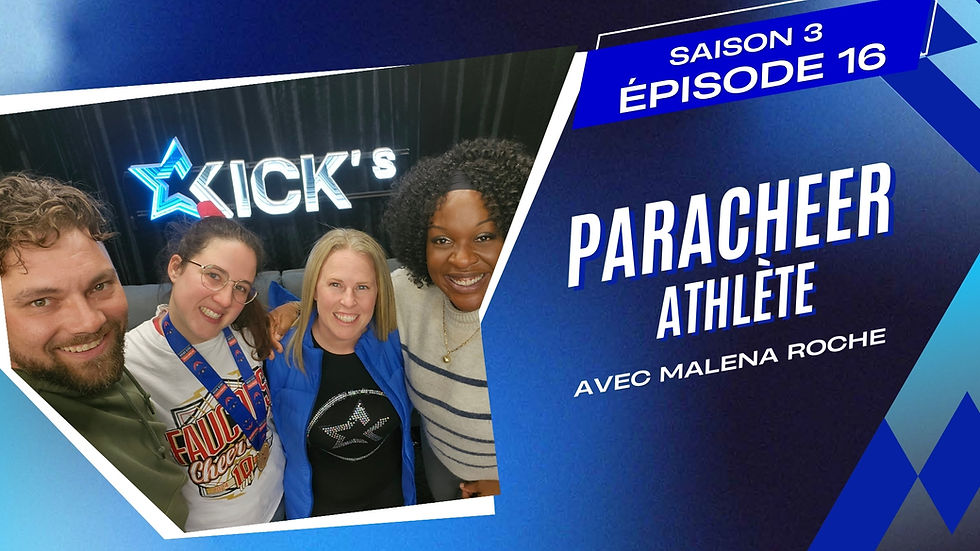🩼 The Pressure of Injuries in Cheerleading (S2.7)
- janie724
- Jul 17, 2025
- 2 min read
Updated: Jul 21, 2025
Episode of October 14, 2024
Cheerleading is a demanding sport that can sometimes put athletes under pressure, especially when it comes to dealing with injuries. In this special episode of Kick's Cheer Podcast, a panel of experts shared valuable advice to help athletes and their parents navigate this reality. Here are the key takeaways.
🤕 Understanding the risks of injury
Cheerleading athletes often face injuries due to the physical nature of the sport. Sprains, fractures, and muscle soreness are common. However, it's important to recognize that not all injuries require a complete hiatus. Sports medicine physicians and therapists can offer solutions that allow athletes to continue training safely, even with an injury.
The importance of communication ‼️
Communication between athletes, coaches, and healthcare professionals is crucial. Athletes must feel comfortable expressing concerns about pain or injury. Parents, for their part, must support their children in this process and follow the professionals' recommendations.
🏋️♀️ Evaluate and adapt training
When injuries occur, it is often possible to adapt training rather than stopping completely. For example, an athlete with a sprained ankle may not be able to jump but can continue working on their strength or flexibility. Coaching should incorporate these adaptations to help the athlete stay engaged without compromising their recovery.
Managing external pressure 💪
Athletes often feel pressure to continue performing despite pain, especially near important competitions. It is vital that parents and coaches foster a safety-first culture, where athletes' physical and mental health take precedence over immediate results. This includes not forcing an athlete to "toughen up" (persist through pain) and recognizing that rest may sometimes be the best option.
💭 Visualization as a tool
An interesting point discussed in the podcast is the use of visualization. Athletes can mentally practice their movements, which can help reduce the fear of re-injury. This technique helps maintain muscle memory and can facilitate a gradual return to training.
The evolution of mentality in sport
Fortunately, the mentality surrounding injuries is changing. More and more coaches and clubs are recognizing the importance of athletes' mental and physical health. New safety standards in competitions, which penalize high-risk elements, reflect a shift toward safer practices. This means athletes are encouraged to focus on stable and safe performances.
Conclusion
In short, injury management in cheerleading is a complex topic that requires a holistic approach. Athletes, parents, and coaches must work together to create an environment where health takes precedence over performance. By recognizing risks, adapting training, and supporting a culture of open communication, we can help athletes navigate these challenges while continuing to enjoy their passion for cheerleading.
Remember: It's always better to take a moment to heal properly than to risk long-term injuries. Together, let's make cheerleading a safe and positive sport for everyone!






Comments